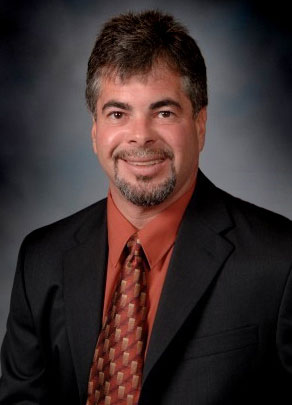Three and a half years ago, Doug Volinski, CFO of Duncan (Okla.) Regional Hospital, arrived at the small independent hospital with a growing plate of experience.
He previously was the compliance officer at Valley Baptist Medical Center in Harlingen, Texas eventually becoming Valley Baptist's interim CFO and ultimately its vice president of finance. He then moved to Fort Oglethorpe, Ga., just south of Chattanooga, Tenn., as the CFO of Hutcheson Medical Center before heading west to Duncan Regional.
"I've had a lot of different experiences, and in this industry, the more and variety of experiences you have gives perspective," Mr. Volinski says.
Here, Mr. Volinski explains the major issues at Duncan Regional, the strength of the hospital's balance sheet and what other CFOs of small rural hospitals should be focused on right now.
Question: Duncan Regional Hospital is a small, independent, 145-bed community hospital. As CFO, what are the biggest issues you're working on right now?
 Doug Volinski: This is an independent community with a strong desire for the hospital to remain independent. We just went live on July 1 with our fully electronic medical record system. We have a strong IT department, so it's been fairly smooth so far. We're at stage 1 meaningful use and we are ready for stage 2. Duncan Regional was recently recognized as a Most Wired Hospital in 2013 and has been on the Most Wired list seven of the last 11 years. We're blessed to have a great IT team.
Doug Volinski: This is an independent community with a strong desire for the hospital to remain independent. We just went live on July 1 with our fully electronic medical record system. We have a strong IT department, so it's been fairly smooth so far. We're at stage 1 meaningful use and we are ready for stage 2. Duncan Regional was recently recognized as a Most Wired Hospital in 2013 and has been on the Most Wired list seven of the last 11 years. We're blessed to have a great IT team.
Q: What is the hospital's balance sheet like today, and how does it compare to five years ago?
DV: Our balance sheet is in good shape. Our level of debt is reasonable. Five years ago, in 2008, the hospital was in a growth mode. We issued debt that year and were adding services and facilities then, so the balance sheet wasn't as strong. We're benefiting from that growth today.
Q: How would you describe the competition in the area? I understand the area is fairly spread out.
DV: Basically, we are in a 45,000-person county. If we offer the services, we generally provide the majority of them here. The nearest hospital is approximately 30 to 35 miles from Duncan Regional.
We have developed a joint venture with Comanche County Memorial Hospital in Lawton and Jackson County Memorial Hospital in Altus for cancer care. We have cooperated when it benefits the community.
Q: How is Duncan Regional being innovative with commercial payer contracts? Are there certain things you're doing with the Uniteds and Aetnas to make sure your reimbursement stays strong? And what is your payer mix?
DV: We currently do not have any shared savings arrangements or anything of that nature. We have not seen movement toward payer contract innovation in this market. We believe high quality and relatively low costs will help position Duncan Regional for the future.
Q: Oklahoma is one of many states that will have a federally facilitated health insurance exchange instead of a state-run exchange. What do you think will happen with the insurance exchanges, and how do you think they will impact Duncan Regional?
DV: I think they are going to roll out slowly and offer more options for folks. Our hope is that people who cannot afford insurance now will qualify for coverage in the near future. We are working with and supporting state efforts to develop an Oklahoma plan than can access the federal dollars provided by the ACA.
I think the exchanges will drive down reimbursement. People will most likely choose less expensive plans with higher deductibles. There will be added pressures on hospitals to collect more from patients.
Q: What are the best fiscal strategies other hospital CFOs should be working on right now?
DV: Take out all the costs you can and work with physicians to ensure quality and patient satisfaction metrics are as high as possible.
Key are physicians — we must work with them to help lower costs while maintaining high quality and patient satisfaction.
Q: What do you think the typical hospital will look like in the future, say 20-25 years down the road?
DV: Of all the questions you asked, this is the most difficult one. Given all the change that has occurred in the past 25 years, and accelerated in the past five to 10 years, I can't even imagine what a hospital will look like in 25 years. With all the advances in genetics and science, we may not do much more than care for physical trauma and orthopedics. Hospitals will most likely be smaller. It's an interesting and exciting time to be in this business.
More Articles on Hospital CFOs:
Philosophies on Mergers and Finances: Q&A With Beaumont Health System CFO Nick Vitale
Coordinating Care and Incentives: Q&A With Cleveland Clinic CFO Steve Glass
Refinancing Debt to Stay Solvent: Q&A With The Brooklyn Hospital Center CFO Joe Guarracino

